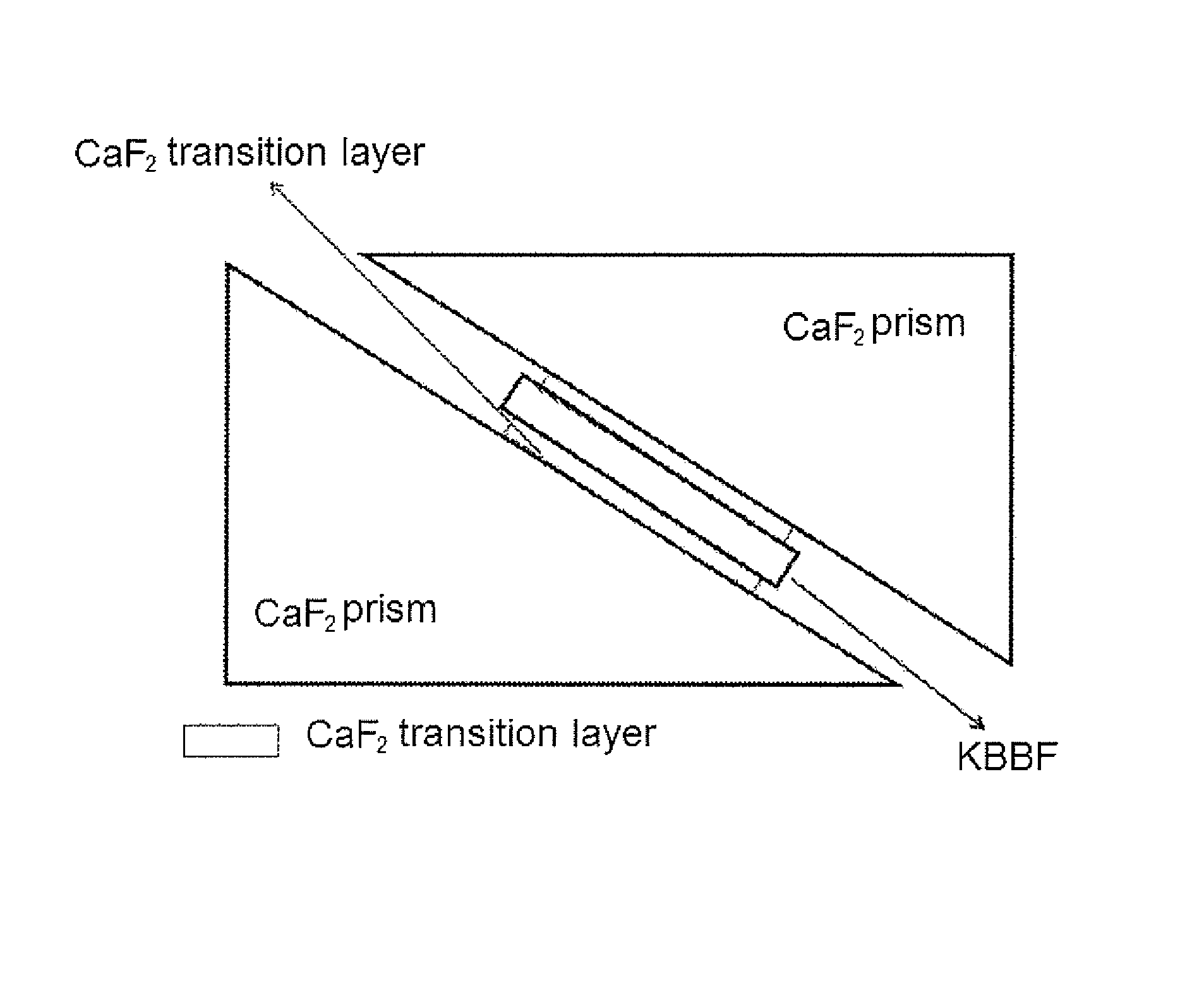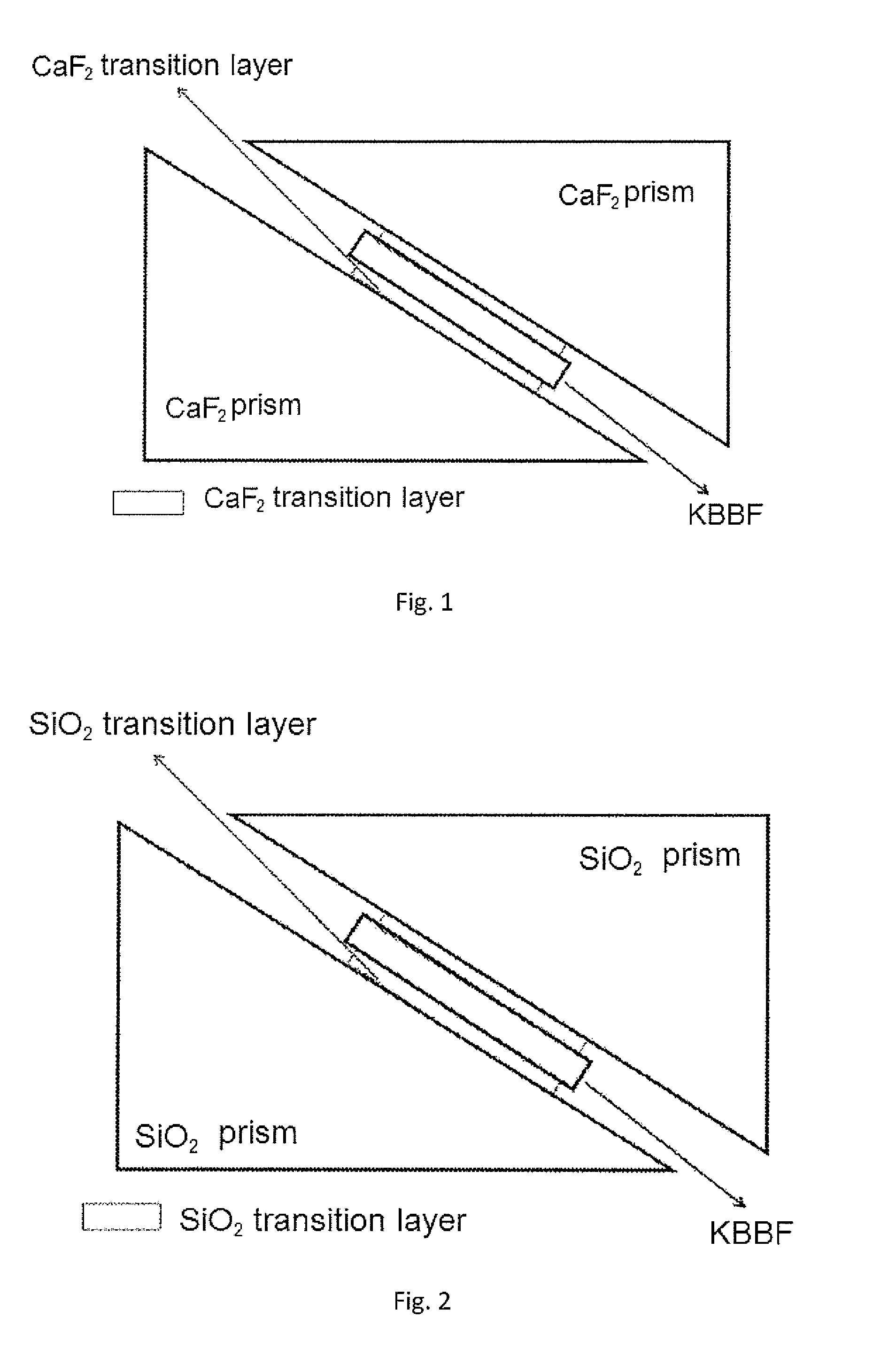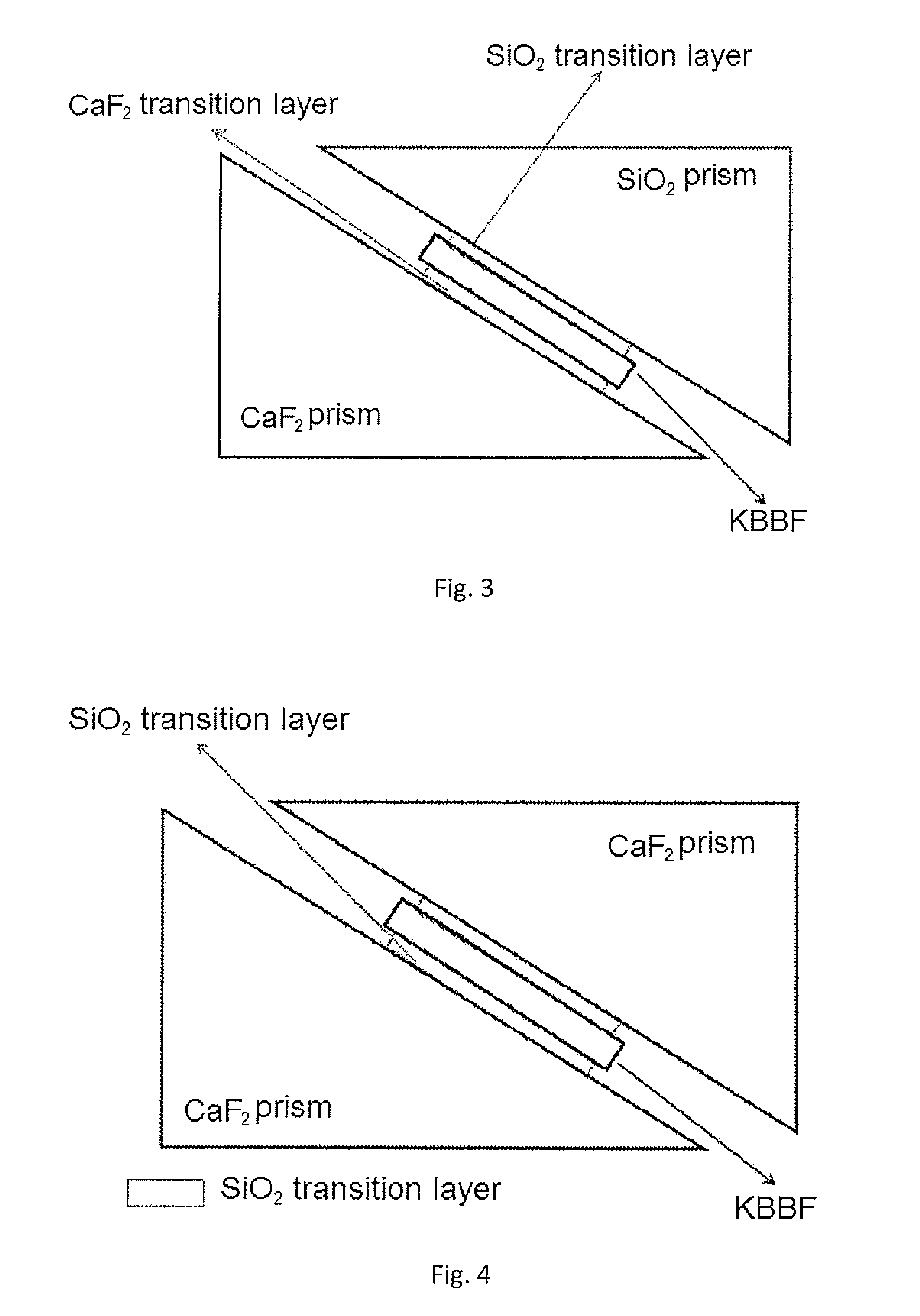Optical coupling device having KBBF group crystal coupled with prisms and method for manufacturing same
a technology of optical coupling and prism, which is applied in the field of optical couplers, can solve the problems of affecting the quality of devices, affecting the bonding strength of the present invention, and difficulty in achieving an optical adhesive whose refractive index completely consists with that of the optical components, etc., and achieves enhanced optical contact, improved bonding strength, and simple process
- Summary
- Abstract
- Description
- Claims
- Application Information
AI Technical Summary
Benefits of technology
Problems solved by technology
Method used
Image
Examples
embodiment 1
The Fabrication of a KBBF-Calcium Fluoride (CaF2) Crystal-Prism Coupler
[0059]The KBBF-CaF2 crystal-prism coupler for coherent light output of 177.3 nm shown in FIG. 1 is fabricated by the following process.
[0060]First of all, two optical contact surfaces of a KBBF family crystal and optical contact surfaces of two CaF2 prisms are polished precisely to form ultra-smooth surfaces. The smooth surfaces of the KBBF family crystal and the prisms have surface roughness Ra of less than 0.5 nm and surface flatness of less than ⅛λ (λ=632.8 nm).
[0061]Each of both polished surfaces of the KBBF family crystal is then deposited respectively by a layer of CaF2 film, which has a thickness in a range of 200 nm-250 nm. Vapor deposition is applied to the CaF2 film by ion beam assisted electron beam evaporation. After activating the CaF2 coatings by mechanical polishing, the two coated surfaces of KBBF crystal bond with CaF2 crystal prisms by optical contact. The bonded KBBF-CaF2 crystal-prism coupler ...
embodiment 2
The Fabrication of a KBBF-Fused Silica (SiO2) Prism Coupler
[0062]The KBBF-fused silica prism coupler for coherent light output of 193 nm shown in FIG. 2 is fabricated by a way similar to Embodiment 1. The difference is in that the transition layers deposited on the surfaces of KBBF crystal are SiO2 films and both fused silica prisms are SiO2 films. The SiO2 films are in thickness of 300 nm-320 nm. Vapor deposition is applied to the SiO2 films by ion beam assisted electron beam evaporation. The four SiO2 films coated on the KBBF crystal and fused silica prisms are activated by mechanical polishing. The KBBF crystal then optically contacts with fused silica glass prisms (with composition of SiO2) through SiO2 films on respective surfaces. The bonded crystal-prism coupler is clamped firmly at two ends with a certain force by a clamp. After that, the coupler is heated in a furnace at 100° C. for 80 hours in an atmosphere of argon. The KBBF-fused silica prism coupler in this embodiment i...
embodiment 3
The Fabrication of a KBBF-CaF2 / SiO2 Prism Coupler
[0063]The KBBF-CaF2 / SiO2 prism coupler for coherent light output of 177.3 nm shown in FIG. 3 is fabricated by a way similar to Embodiment 1. Embodiment 3 is different from Embodiment 1 in that: one of the transition layers deposited on one of the two surfaces of the KBBF crystal is CaF2 film, and the other transition layer deposited on the other surface of the KBBF crystal is SiO2 film; a CaF2 film and a SiO2 film are coated on the CaF2 prism and the SiO2 prism, respectively; the CaF2 films are in thickness of 500 nm-550 nm and the SiO2 films are in thickness of 600 nm-700 nm. Vapor deposition is applied to the CaF2 and SiO2 films by ion beam assisted electron beam evaporation. The deposited CaF2 films and SiO2 films are activated by plasma, then one surface of the KBBF crystal optically contacts with the CaF2 crystal prism through the CaF2 films, the other surface of the KBBF crystal optically contacts with the fused silica glass (wi...
PUM
| Property | Measurement | Unit |
|---|---|---|
| surface flatness | aaaaa | aaaaa |
| power | aaaaa | aaaaa |
| power | aaaaa | aaaaa |
Abstract
Description
Claims
Application Information
 Login to View More
Login to View More - R&D
- Intellectual Property
- Life Sciences
- Materials
- Tech Scout
- Unparalleled Data Quality
- Higher Quality Content
- 60% Fewer Hallucinations
Browse by: Latest US Patents, China's latest patents, Technical Efficacy Thesaurus, Application Domain, Technology Topic, Popular Technical Reports.
© 2025 PatSnap. All rights reserved.Legal|Privacy policy|Modern Slavery Act Transparency Statement|Sitemap|About US| Contact US: help@patsnap.com



